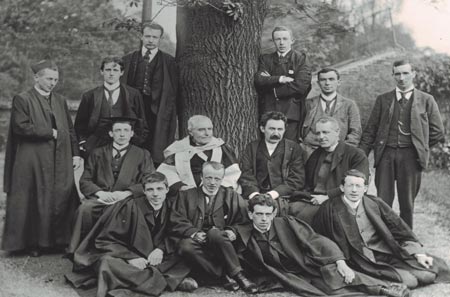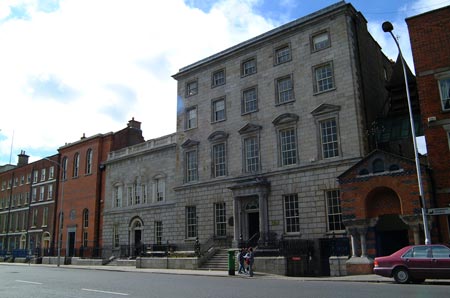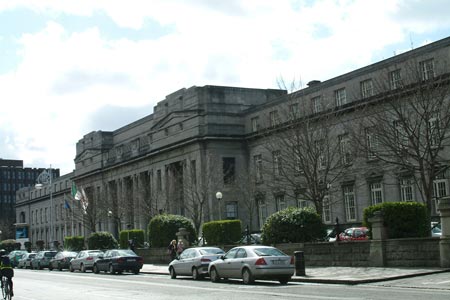UCD – The Early Years
Established by the Catholic hierarchy as an alternative to the non-denominational Queen’s Colleges, the Catholic University began its first academic session on 3 November 1854, with John Henry Newman as its first rector. The new university was housed in an old Georgian house, 86 St Stephen’s Green, and the following year the Catholic University medical school was opened in Cecilia Street. The recognition of certificates of this school by the Royal College of Surgeons in 1856 ensured its success, and by 1900 it had become the largest medical school in Ireland. However, after the departure of Newman in 1858 the Catholic University itself struggled for survival. Its degrees were not recognised by the British government and it did not receive any state funding.
The situation changed in 1880 when the Royal University of Ireland (RUI) was established and students of the Catholic University were entitled to sit the Royal University examinations and receive its degrees. In 1883 the management of the Catholic University, apart from the medical school, was transferred to the Jesuits and its title was changed to University College. Although competing with students of the more established Queen’s Colleges, its students won the majority of the prizes in the RUI examinations. Despite equipment and laboratory constraints in the old Catholic University building, the work of professors such as Thomas Preston, John Alexander McClelland and Arthur Conway established the name of the university in the annals of scientific research. Among the humanities staff of the university were teachers of the calibre of Gerard Manley Hopkins, and its most famous graduate was James Joyce.
In 1908 the Irish Universities Act dissolved the RUI and replaced it with the National University of Ireland, with University College Dublin (UCD) as a constituent college together with University College Cork and University College Galway. The somewhat rundown Earlsfort Terrace headquarters of the RUI, together with the laboratories there, were transferred to UCD, and funding of up to £110,000 was promised for improvements.
Plans for a new building on the site, intended to accommodate 1,000 students, were drawn up in 1912. They proposed a quadrangle that would accommodate the university administration, lecture theatres for the faculties of arts, commerce and law, and lecture theatres and laboratories for the departments of physics, chemistry, anatomy, physiology and pathology. The planned building would never be completed. By 1919 the front and north blocks of the quadrangle had been built, but inflated wartime construction costs meant that funding had run out and work stopped on the remainder of the planned complex.




